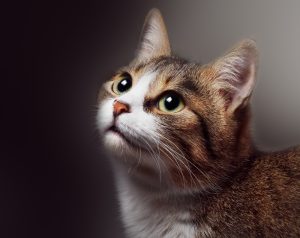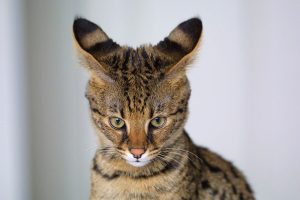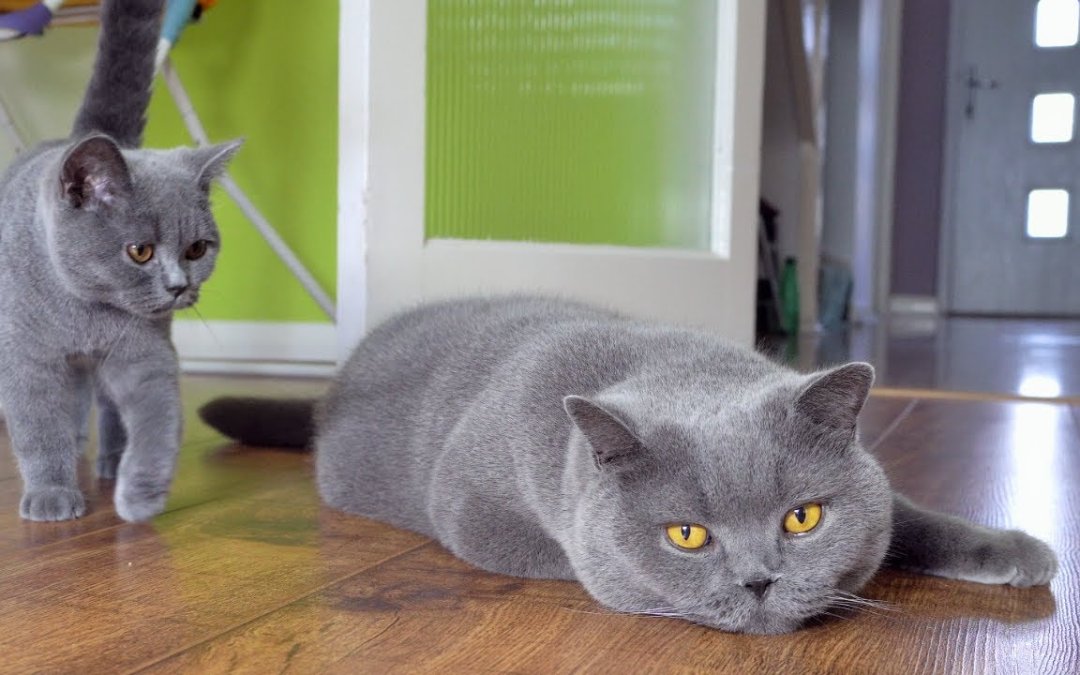Cat ears are one of the most distinctive features of felines and play a crucial role in their sensory perception and communication. Here are some key characteristics and functions of cat ears:
- Ear Anatomy: A cat’s ear consists of several parts, including the outer ear, middle ear, and inner ear. The outer ear is made up of the ear flap (pinna) and the ear canal, leading to the eardrum. The middle ear contains the ear bones, and the inner ear houses the cochlea responsible for hearing and balance.
- Hearing: Cats have excellent hearing abilities, which far surpass those of humans. They can hear a wide range of frequencies, including ultrasonic sounds that are inaudible to humans. Cats’ acute hearing is an adaptation that helps them detect prey, communicate with other cats, and be aware of potential dangers.
- Orientation: Cat ears are highly mobile and can rotate up to 180 degrees. This mobility allows them to pinpoint the source of sounds and quickly respond to auditory cues. Cats use this ability to hunt, avoid predators, and engage in social interactions.
- Communication: Cat ears also serve as a means of communication. The position and movement of a cat’s ears can convey their mood and intentions. For example:
- Ears forward and upright: Indicates curiosity or attentiveness.
- Ears flattened backward: Suggests fear, aggression, or discomfort. cat ears
- Ears slightly turned to the side or twitching: May indicate agitation or annoyance. cat ears

cat ears
Balance cat ears
- The inner ear plays a vital role in a cat’s balance and coordination. It helps them maintain stability while walking, running, and jumping. Injuries or infections affecting the inner ear can disrupt a cat’s balance and coordination.
- Protection: The ear canal and earwax help protect the inner ear from foreign objects, dust, and insects. Cats may use their paws to clean their ears, removing debris and maintaining hygiene.
- Common Ear Issues: Cats are susceptible to ear problems, including ear mites, infections, and wax buildup. Symptoms of ear issues may include head shaking, scratching at the ears, and signs of discomfort. Regular ear cleaning and veterinary check-ups can help prevent and address these problems.
- Hypoallergenic Earrings: Some pet owners choose to adorn their cats’ ears with hypoallergenic earrings or decorative jewelry. While these accessories are mainly for aesthetic purposes, it’s essential to ensure they are safe, comfortable, and not causing any harm or discomfort to the cat.
Overall, a cat’s ears are not only essential for their sensory perception and survival but also play a crucial role in their communication with other cats and humans. Understanding your cat’s ear movements and positions can provide valuable insights into their emotions and needs.

cat ears
american curl
The American Curl is a distinctive and unique breed of cat known for its distinctively curled-back ears. Here are some key characteristics and information about American Curl cats: cat ears
- Ear Curl: The most defining feature of American Curl cats is their backward-curled ears. These cats are born with straight ears, but within the first few weeks of life, their ears begin to curl backward. The degree of curl can vary, with some cats having only a slight curl, while others have a more pronounced curve.
- Physical Appearance: American Curls are medium-sized cats with a graceful and well-proportioned body. They have a silky, semi-long coat that comes in various colors and patterns. Their eyes are large and expressive, and they have a sweet and open facial expression.cat ears
- Temperament: American Curls are known for their friendly and affectionate nature. They are typically good with children and other pets, making them excellent family companions. They are curious and enjoy interactive play and human interaction.
- Intelligence: American Curls are intelligent cats that can be easily trained and enjoy puzzle toys and games that challenge their minds. They are quick learners and may even enjoy leash training and fetch.
- Vocalization: While not excessively vocal, American Curls may use soft meows and purring to communicate with their owners. They are known for their sweet and melodic voices. cat ears
Health Considerations: American Curls are generally healthy cats, but like all breeds, they can be prone to certain health issues such as hip dysplasia and hypertrophic cardiomyopathy (a heart condition). Regular veterinary check-ups are essential.
- Origin: The American Curl breed originated in California in the 1980s when a stray cat with curled ears was found and eventually bred. The curled ear trait was found to be due to a genetic mutation, and the breed was developed from there.
- Popularity: American Curls have gained popularity for their unique appearance and friendly personality. They have a dedicated following among cat enthusiasts. cat ears
- Grooming: The semi-long coat of an American Curl requires regular grooming to prevent matting and reduce shedding. Regular brushing and occasional bathing can help maintain the condition of their coat.
- Indoor Living: Due to their friendly nature and semi-long coat, American Curls are well-suited for indoor living. They thrive in homes where they receive attention and companionship.
American Curl cats make wonderful companions for individuals and families who appreciate their unique ear curl and affectionate disposition. When acquiring an American Curl, choose a reputable breeder or consider adopting from a rescue organization that prioritizes the welfare of their cats. cat ears
curly hair cat
Cats with curly hair are relatively rare but intriguing due to their distinctive coats. There are two primary breeds known for having curly hair:
- Cornish Rex: Cornish Rex cats are known for their wavy and curly fur, which is caused by a genetic mutation. They have a slender, athletic build, large ears, and an expressive face. Their fur is fine, soft, and lacks a typical topcoat, giving it a unique texture. Cornish Rex cats come in various colors and patterns.
- Devon Rex: Devon Rex cats are another breed with curly hair. They have a similar genetic mutation to the Cornish Rex, resulting in their wavy and curly fur. Devon Rex cats have large ears, prominent cheekbones, and a pixie-like appearance. Their coat is short and curly, often described as “rexed.” Like Cornish Rex cats, they come in various colors and patterns.
Both the Cornish Rex and Devon Rex breeds are known for their friendly and affectionate personalities. They are generally good with children and other pets, making them suitable for family life. Their unique coats require minimal grooming compared to long-haired breeds, but they may benefit from regular brushing to keep their fur in good condition and reduce shedding.
It’s important to note that not all cats with curly hair belong to these specific breeds. Occasionally, mixed-breed cats or cats with curly hair due to genetic variations may also have curly coats. Regardless of their breed, cats with curly hair can make delightful and unique companions for those who appreciate their distinctive appearance and friendly nature.cat ears

